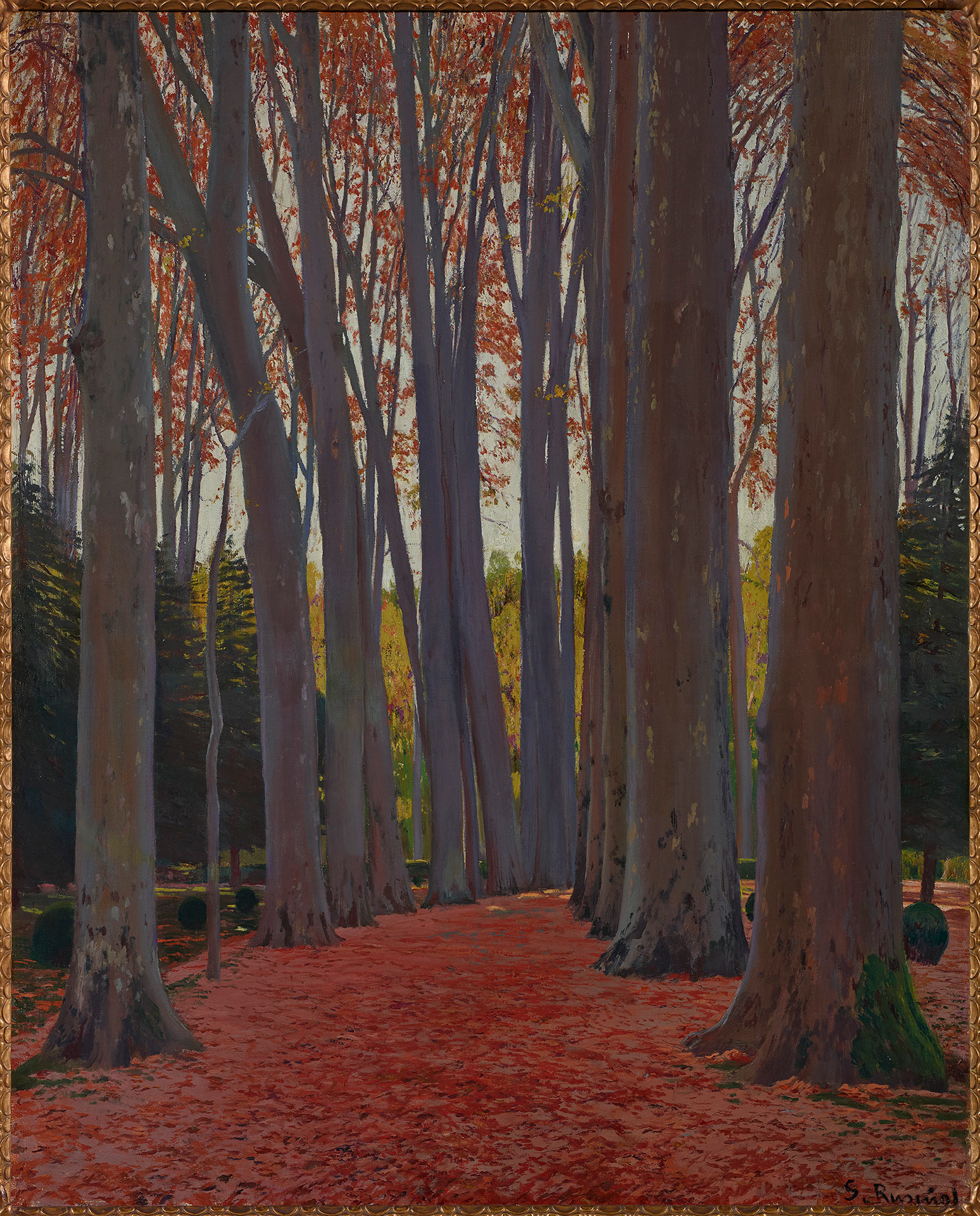
Santiago Rusiñol (Barcelona, 1861 – Aranjuez, Madrid, 1931)
Avenue of Plain Trees
1916
WORK INFORMATION
Oil on canvas, 124 x 102 cm
OTHER INFORMATION
Signed in the lower right-hand corner: "S. Rusiñol"
Santiago Rusiñol was born in Barcelona on 25 February 1861 into a family of textile industrialists. Orphaned at a very young age, he was raised by his grandfather, who tried to steer him into the family business. However, Rusiñol managed to combine his duties with night classes at Tomás Moragas's painting academy. He began participating in various exhibitions and soon embarked on a prolific literary career. It was at this time that he established ties to the journal L'Avens, later renamed L'Avenç, which a group of young intellectuals used to circulate the concept of Modernisme (Catalan Modernism or Art Nouveau).
He married in 1886, but a few years later he left his wife and daughter to take up the bohemian lifestyle. He stayed in Paris for a time with the sculptor Enric Clarasó, and shortly after the 1888 Universal Exposition in Barcelona he and Ramón Casas took off in a horse-drawn cart to explore Catalonia. In 1890 the two artists were reunited in Paris and shared lodgings at the Moulin de la Galette, in Montmartre. Slightly less audacious and Impressionist than Casas, Rusiñol's painting was better received than his friend's work by the conservative critics at their first joint show in Barcelona (Sala Parés, 1890). One year later Rusiñol discovered Sitges, where he organised a series of festivals that became focal points of the modernist movement in Spain.
After a second sojourn in Paris (1894), Rusiñol's brand of modernism went from something synonymous with naturalism/Impressionism to a style of symbolism: the influence of Botticelli's painting, "discovered" that same year in Paris and Italy, and the need to idealise a reality rendered too grim by the latest anarchist assaults, led him to embrace a precisionist, decadent, medievialising art. It may have been during this third stay in the French capital that he painted Boats on the Seine, still clearly dominated by his typical grey, restrained Impressionism.
When the family of his good friend and fellow painter Ramón Casas bought the Romanesque Monastery of San Benet at Bages, near Manresa, Rusiñol painted the cloister in 1907 and at least two additional oils. At the time both Rusiñol and Casas were moving away from the Modernist preoccupations that had fuelled their transcendental burst of creative activity years earlier, but their technical prowess remained as impressive as ever. In fact, this was not the first time that Rusiñol had painted the monument, for in 1889 he did an oil painting on the same theme.
After a trip to Granada in 1898, his pictorial work focused on gardens, a theme he used to channel the symbolist concept he had already fully embraced and his aversion to the landscape in its natural state, almost always preferring to depict nature tamed by the hand of man. Avenue of Plane Trees and Path in a Park are good examples of this. The former depicts the Gardens of Aranjuez, one of his favourite pictorial motifs since he first discovered them in 1898; in fact, Alfonso XIII later appointed him honorary head gardener of the royal estate at Aranjuez. The powerful presence of the tall plane trees, the vertical lines of their thick trunks, the evocative theme of the path running off into the distance, so dear to the painter, make this one of Rusiñol's most accomplished and forceful compositions.
Though undated, Path in a Park seems to be a somewhat later work based on technique. Here Rusiñol revels in the regular placement of the trees that dominate the composition, confronting them as symmetrically as possible without compromising the work's eminently realistic feel. [Francesc Fontbona]

